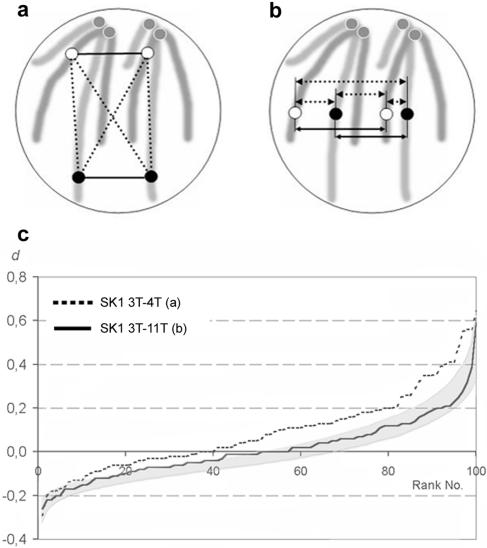FIG. 4.
Influence of the Rabl orientation on the association of chromosomal loci. (a) If Rabl orientation has an influence on the relative distances between homologous and nonhomologous loci, nonhomologous loci at different distances from the centromeres would on average be more distantly separated in interphase than homologous loci. (b) There should be no Rabl-induced bias toward longer nonhomologous distances if probes are at equal distances from the centromeres (homologous FISH signals are indicated by circles of the same color). Solid lines, homologous distances; dotted lines, nonhomologous distances. (c) Graphic representation of experiments (experiments 1 and 2 in Table 2) corresponding to the situations modeled in panels a and b. The dotted curve shows the d values for loci 3T and 4T (see Fig. 1). In 59% of the nuclei is d > 0 (i.e., the homologous loci are more closely positioned than heterologous loci). The solid curve shows the d values for 3T and 11T. In this case there is a much weaker preference for closer association between homologous than between heterologous loci, as in only 42% of the nuclei d > 0. The solid curve runs almost entirely within the interval defined by encompassing 90% of simulations of random positioning of homologous loci in Fig. 3a (shaded area).

